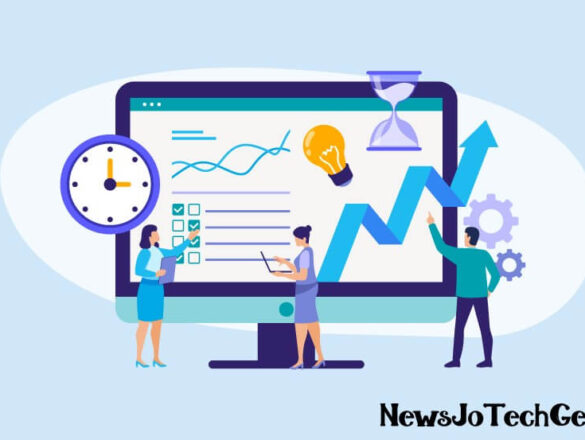Introduction to Modern Performance Reviews
Employee performance reviews have long been a staple of human resource practices, yet their efficiency has been increasingly questioned. Traditional performance reviews, typically held annually, often fail to capture the dynamic contributions of employees and fall short of encouraging regular communication.
The corporate environment is shifting towards more responsive and continuous feedback systems, demanding a reevaluation of performance management approaches. To facilitate this transition, businesses are turning to advanced performance review software solutions that provide up-to-the-minute feedback and support an agile work culture.
This evolution in performance management reflects broader changes in workplace expectations. Employees today crave acknowledgment of their work and clear guidance on improving — not once a year, but consistently.
Businesses that succeed in implementing more frequent performance discussions often enjoy higher employee engagement, productivity, and loyalty, paving the way for a more motivated and efficient workforce.
The Shift Towards Continuous Feedback
The shift from annual reviews to continuous feedback responds to the need for more immediate and actionable performance management. Continuous feedback allows for in-the-moment guidance, helping employees stay aligned with their goals, enhancing their growth, and contributing more effectively to their team.
This system perfectly harmonizes with modern work environments, where rapid innovation often requires workers to adapt quickly and respond to changing priorities.
Frequent feedback can also help bridge communication gaps, ensuring managers and employees are on the same page. Adopting this approach signals a commitment to nurturing talent and creating lasting growth opportunities for organizations. You can collect feedback using an AI survey generator and easily share it with your employees.
Employees, in turn, experience reduced anxiety about performance expectations, resulting in a more satisfying and harmonious work environment.
Technology’s Role in Performance Evaluations
Technology is revolutionizing every aspect of modern business, and performance evaluations are no exception. Advanced software tools now offer intuitive, efficient, and objective means to evaluate employee performance.
These tools streamline data collection and time management and provide user-friendly interfaces, facilitating smoother interactions between managers and their teams.
Managers can allocate more time to personal and developmental dialogues with employees by reducing administrative burdens and fostering a supportive atmosphere conducive to growth. Moreover, technology allows businesses to tailor performance reviews according to individual roles, ensuring that metrics are relevant and aligned with specific job functions.
The Benefits of Data-Driven Insights
The rise of big data and analytics has significantly influenced performance reviews, bringing a new level of precision to the process.
Data-driven insights enable organizations to set and adjust measurable goals, clearly showing current performance and potential improvements.
This approach reduces subjective bias and lends credibility to the evaluation process.
With access to detailed performance metrics, teams are better equipped to devise strategies that enhance individual capabilities and drive company-wide performance.
Managers can use data to provide precise, constructive feedback that pinpoints exactly where employees can make strides, fostering an environment of continuous improvement and learning.
Embracing a Holistic Approach
A holistic approach in performance reviews captures a well-rounded picture of an employee’s contributions. Rather than focusing solely on numerical targets, this perspective also considers soft skills like leadership, communication, and adaptability, which are increasingly vital in today’s workplaces.
Employees are not merely evaluated on their ability to meet targets but on how they embody the organization’s values and contribute to its culture.
This comprehensive view facilitates a deeper understanding of an employee’s strengths and potential growth areas, fostering a supportive and inclusive working atmosphere.
It can improve interpersonal dynamics and a more cohesive team, benefiting the organization’s success.
Training Managers for Effective Feedback
The success of performance reviews largely hinges on managers’ ability to deliver effective feedback. This necessitates dedicated training programs that enhance communication skills and ensure that feedback is both constructive and encouraging.
Managers must learn to highlight strengths while addressing areas for improvement in a way that motivates employees to excel.
Organizations prioritizing this training invest in a culture of open dialogue and continuous development. Effective communication reinforces the bond between employee and employer, increasing job satisfaction and loyalty. It transforms performance reviews into a powerful career progression and organizational growth tool.
Addressing Common Challenges in Performance Reviews
Performance reviews can be fraught with challenges, particularly regarding potential biases that may obscure objective assessment.
Organizations need to commit to overcoming these hurdles to ensure fair and accurate evaluations. Setting clear criteria and implementing bias training for evaluators are essential steps in this process.
Transparency and inclusivity should be at the core of performance review systems. By encouraging input from diverse sources and valuing varied perspectives, companies can minimize bias and uphold fairness in their evaluations. Such practices not only enhance credibility but also build trust across the organization.
The Future Landscape of Performance Assessments
The evolution of performance assessments shows no signs of slowing down. Integrating artificial intelligence and machine learning into performance management systems will likely offer increasingly sophisticated insights and recommendations as technology advances.
Companies must adapt by fostering a culture of agility, innovation, and continuous learning.
By embracing these emerging trends, organizations can empower their workforce to achieve their full potential, improve job satisfaction, and drive better business outcomes. Ensuring that performance assessments keep pace with these developments will be vital to maintaining competitive advantage in an ever-evolving business landscape.
Moreover, leveraging data analytics will enable companies to identify patterns in employee performance, providing personalized feedback and targeted development opportunities.
This shift toward a more data-driven approach can enhance transparency and trust between employees and management, fostering a more engaged workforce.
Ultimately, organizations that invest in advanced performance assessment technologies will be better equipped to attract and retain top talent, positioning themselves for long-term success.




